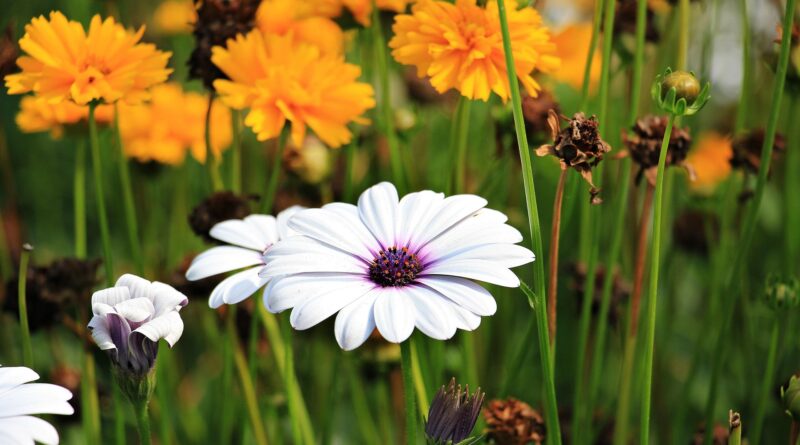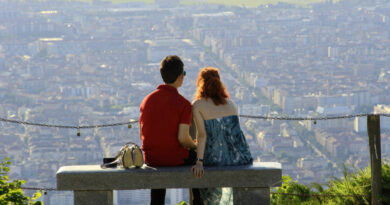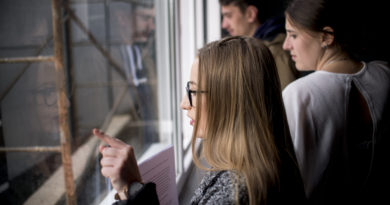What’s on: European artists and cultural events to look out for in London and the UK this month
From the visual arts to music and theatre, London and the UK host a wealth of European culture. March sees the launch of the annual Polish film festival Kinoteka and Cinema Made in Italy, an exploration of the best new Italian cinema at BFI Southbank. Here is a guide to the events planned in the coming weeks.
6 March – 25 April – 23rd Polish Film Festival Kinoteka. The New Polish Cinema strand features the most significant Polish productions of the past year, including Minghun, Under the Grey Sky, Simona Kossak and It’s Not My Film, screening at renowned London cinemas.
12-16 March – Cinema Made in Italy, a celebration and exploration of the best new Italian Cinema and the filmmakers creating them Welcome to Cinema Made in Italy, in its new home at BFI Southbank.
14 and 30 March – Nordic Circus performances are brought to London by Agit Cirk, Sakari Männistö and The Nordic Council. Happy hour, and a silent performance exploring the beauty of everyone’s unique light take place at Jacksons Lane in London.
14 March – Ed Byrne, one of Ireland’s most beloved and celebrated comedians, takes to the stage at the Irish Cultural Centre, with Marty Gleeson and Denis Len as supporting acts.
15 March – Donne di Mafia 2025, the fifth and maybe final edition of an Italian mini film festival that aims to shed light on the gendered nature of mafias, brought to the Garden Cinema by CinemaItaliaUK.
22 March – A jazzy spring session at the Jazz Café Posk with the Gosia Janek quintet. Gosia is an award winning singer-songwriter and has appeared on ‘The Voice of Poland’.
25 March – Screening of ‘Identity: A Czech graphic design love story’ at the Czech Embassy Cinema London. Renowned New York-based auctioneer and passionate collector Nicholas Lowry embarks on a captivating journey across the Czech Republic, uncovering the visual and cultural threads that define its national identity. The screening will be followed by a Q&A (via Zoom) with director Petr Smělík, curator Linda Kudrnovská and film host Nicholas Lowry.
Until 28 March – Viaggio in Italia, a photographic project by Italian artist and photographer Luigi Ghirri, is on display at the Italian Cultural Institute of London. The project conceived in 1984 is considered a milestone of the history of contemporary Italian photography.
Until 17 April – The Garden Cinema presents “Contemporary Greek Cinema: Beyond the Weird Wave”. The season showcases films exploring Greek’s turbulent political and social past, and the experimental nature of Greek cinema featuring directors like Yorgos Lanthimos and Argyris Papadimitropoulos.
Until 30 March – Franciszka Themerson – Walking Backwards at Tate Britain in London. Films, drawings and paintings mingle tragedy and humour to explore the turbulent years before and after the Second World War. Born in Poland in 1907, Franciszka Themerson trained as a musician, graphic designer and painter in Warsaw. There, she met her husband, Stefan Themerson. At a time of rising fascism in Europe, the Themersons’ work challenged social conformity and revealed their belief in individual freedoms. In 1938, the pair moved to Paris to continue their work. They volunteered for the Polish army in France but were separated during the war. Following the Nazi invasion in 1940, Franciszka was able to leave for London while Stefan remained in hiding, fearing persecution. The couple were reunited in 1942 and remained in London for the rest of their lives, but only one member of their families survived the Holocaust.
Until 30 March – Picasso printmaker at the British Museum. In addition to his many paintings, sculptures and drawings, Pablo Picasso (1881–1973) made over 2,400 prints during his career. This exhibition offers insights into the life of the Málaga-born artist, from his early years in Paris to his old age in the South of France, including his complex relationships with women and his partnerships with printers, publishers and other artists.
Until 21 April – Versailles: Science and Splendour, an exhibition on how the Palace of Versailles used science as a tool of power, at the Science Museum in London. The Palace of Versailles is famous for its opulent architecture and rich history. In the 17th and 18th centuries, it also became a major site of scientific thinking. On display, spectacular objects including Louis XV’s rhinoceros, an extraordinarily detailed map of the moon by Jean-Dominique Cassini and the world’s most famous watch, designed for Marie Antoinette. The exhibition also tells the stories of significant figures associated with the pursuit of knowledge at Versailles, including the pioneering Madame du Coudray, who trained thousands of midwives across rural France.
Until 26 April – A Polish Heart Beats Here, exhibition at the National Civil War Centre, Newark-on-Trent. Co-produced with members of the local Polish community, the exhibition explores Newark’s ties to Poland, from the Polish Armed Forces’ historical presence to the twin town of Sandomierz, and the vibrant Polish community that now call Newark home.
Closing 11 May – ‘Breaking Lines’, an exhibition at the Estorick Collection of Modern Italian Art on futurism and the origins of experimental poetry. Italian Futurism was in fact founded and led by a poet, Filippo Tommaso Marinetti. The display charts the distinct phases of Futurist poetry and complements an exhibition focusing on the work of Dom Sylvester Houédard, widely recognised as one of the masters of concrete poetry.
Closing 11 May – Gladiators of Britain at Dorset Museum & Art Gallery. A British Museum Partnership Exhibition with Colchester + Ipswich Museums will delve into the lesser-known history of gladiatorial contests in Roman Britain. Launching at Dorset Museum & Art Gallery in January 2025, the exhibition will tour four UK venues, tracing the footsteps of gladiators who once fought in Britain’s amphitheatres.
Closing 15 May – Women & Freud: patients, pioneers, artists, an exhibition at the Freud Museum in London about the women who helped Freud invent psychoanalysis, and their legacy in its practice. The Freud family moved to England as refugees, having escaped Austria following the Nazi annexation in March 1938. The museum is Sigmund Freud (1856-1839) family home, with his study and famous psychoanalytic couch. Here is where he spent his final days, and where his daughter, psychoanalyst Anna Freud, also lived, worked and died.
Until 16 May – The Courtauld Gallery presents the first ever exhibition of the Oskar Reinhart collection ‘Am Römerholz’ outside of Switzerland. Works by Goya, Monet, Renoir, Van Gogh, Picasso, and Cezanne will feature.
Until 31 May – The European Parliament liaison office in London hosts at Europe House the exhibition Ukraine: Architectures of Despair and Hope, aiming to shed light on the architecture under destruction during the war, and on the work of war photographers and cultural workers. Augmented reality is used to bring digitised cultural heritage into dialogue with the photographic image of persistent destruction.
Until 4 June – Once upon a time… For European History Wednesdays the French Association of Historians (L’Association des Historiens) offers a series of lectures on the Roman civilization, with a renowned French academic discussing each month the story of the peoples that preceded us in Europe.
Until 15 June – One of post-war Germany’s most influential artists will be on exhibition at the Ashmolean Museum, Oxford. 45 of Anselm Kiefer’s works will be displayed, mainly from his earlier periods, making these pieces a rare sight. The exhibition features paintings, photographs, and mixed-media works.
Ongoing – ABBA Voyage, at the ABBA Arena in London. The concert features the Swedish band, one of the biggest pop acts of all time, as digital versions of themselves backed by live musicians playing their most popular hits.
Ongoing – ‘Lost & Found: a European literary map of London’, by University College London (UCL). An online map to explore London through the eyes of European writers and reflect on the city as a place where people and cultures meet and are transformed. You can also submit new entries via the website.
For more events check the following organisations:
- Austrian Cultural Forum
- Battersea Spanish
- British Czech and Slovak Association
- CinemaItaliaUK
- Cyprus Culture in the UK
- Czech Centrę London
- Dutch Centre
- Finnish Institute
- Goethe Institut
- Hellenic Centre
- Institut Français
- Irish Cultural Centre
- Italian Cultural Institute
- London Irish Centre
- Polish Jazz Café POSK
- Polish Cultural Institute London
- Settled website with European cultural events in Wales
More events to share? Let us know at hello [@] europestreet.news
Hugo Annarumma contributed to this article @ Europe Street News, all rights reserved
Image from Pixabay
Europe Street News is a news service on the European Union and citizens’ rights. We are fully independent and we are committed to providing factual, accurate and reliable information. As citizens’ rights are at the core of democracy, our website and newsletter are free to read. Please consider making a contribution of your choice using this link or the menu below so we can continue and expand our coverage. We are always happy to hear your suggestions and ideas for improvement. Thank you!





